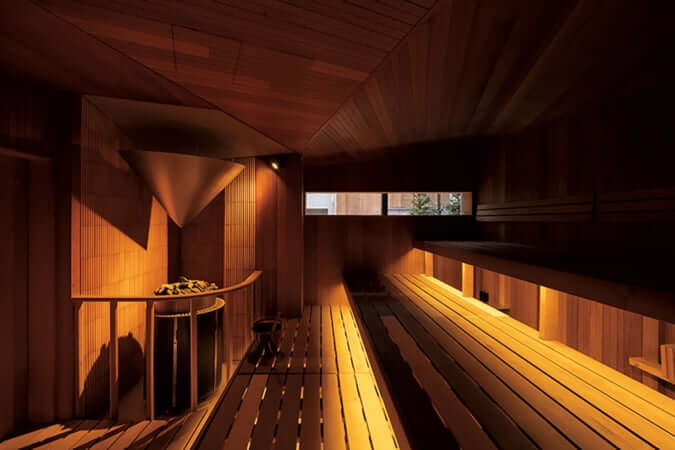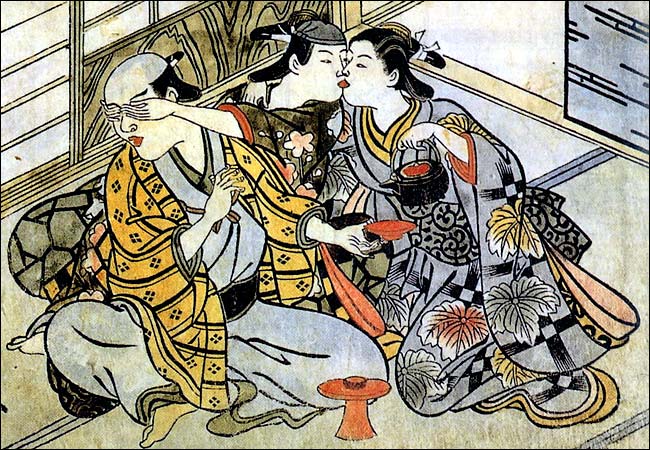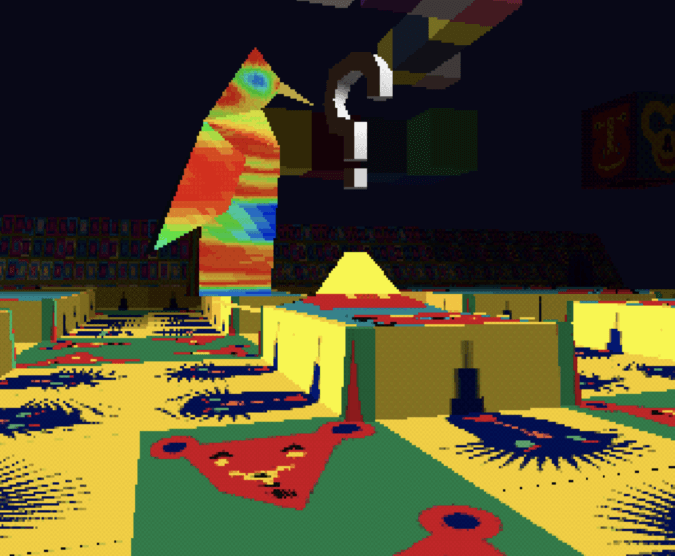Okayama: Land of Swords, Ceramics, Mountains, and Sea
In this prefecture, century-old culture and craftsmanship can still be enjoyed today in the midst of a lush natural environment.
Bordered to the south by the Seto Inland Sea and to the north by the Chugoku Mountains, Okayama Prefecture boasts spectacular scenery in all seasons. Its historical importance on the freight route along the Japanese mainland encouraged the development of crafts such as pottery and sword metallurgy, and their legacy is still very much alive in the region today. Thanks to its mild climate and rich soil, the prefecture is also known for the production of fruits such as white peaches and muscat and pione grapes. Beyond the well-known capital city of Okayama and the canal city of Kurashiki, the prefecture where the legend of Momotaro, the peach boy, originates has much more to offer. Today we visit the regions of Takahashi, Bizen, Setouchi, and Nagi.
Takahashi, a Castle on a Sea of Clouds and the Birthplace of ‘Japan Red’

Bitchu-Matsuyama Castle, emerging from a sea of clouds in the early hours of the day.
Located in the west of Okayama Prefecture, the region of Takahashi is surrounded by green mountains. On top of one of them is Bitchu-Matsuyama Castle, one of the few original castles in Japan that have not been rebuilt, and the only one of them located on top of a mountain. In the early morning of the autumn and winter months, if luck allows, the castle can be seen levitating in a sea of clouds that shrouds it in mystery. Around the base of the castle, the city of Takahashi was born, and some of the former houses of samurai and merchants have been preserved and are open to the public today.
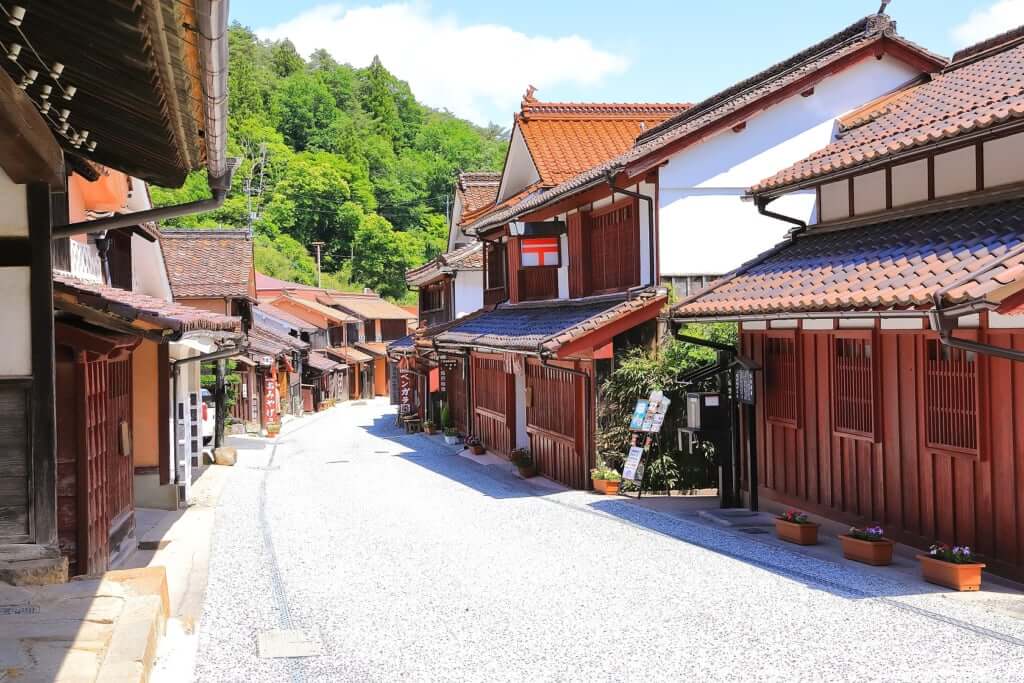
The main street of Fukiya, with its ‘bengara’ red-painted houses, is a unique sight in Japan.
About 15 kilometres west of the city of Takahashi lies Fukiya. This region became very rich thanks to its copper mine and the production of bengara, the pigment that gives its name to the colour ‘Japan Red.’ The main street, lined with old houses painted red, preserves the traditional atmosphere and invites people to take a quiet stroll through the shops and cafés. Fukiya Elementary School, the last school built in wood in Japan, is another place worth visiting in this town. It closed its doors in 2012 and reopened them in 2022 to tourists, who can enjoy its architecture and the atmosphere of an old Japanese school.
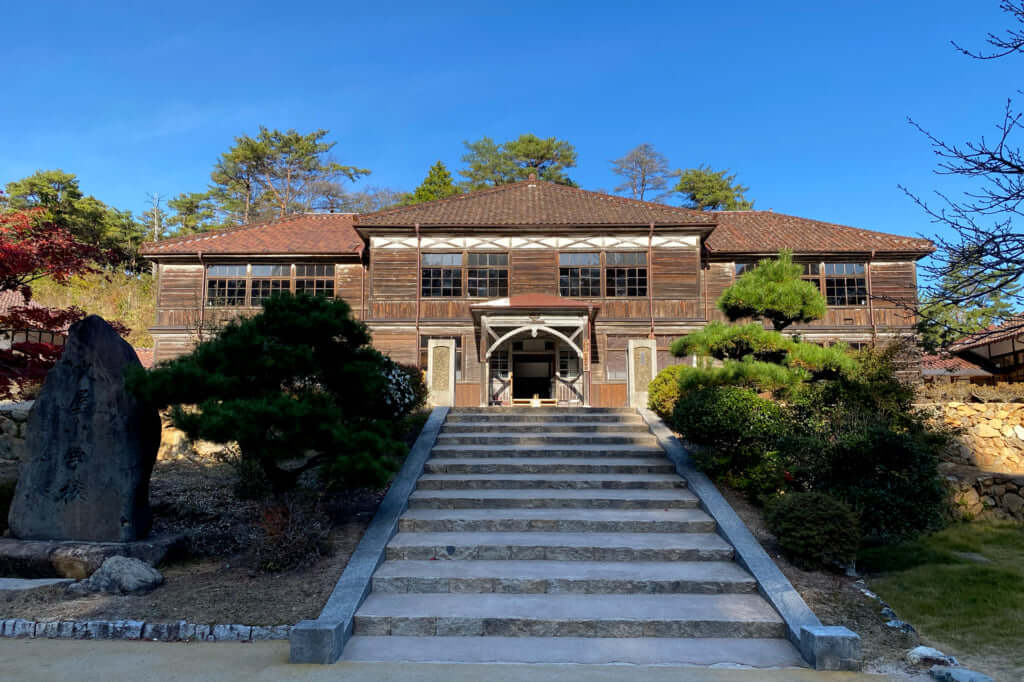
The wooden building of Fukiya Elementary School is another special spot in this small town.
Bizen, the Timeless Tradition of Ceramics and the First Public School in Japan
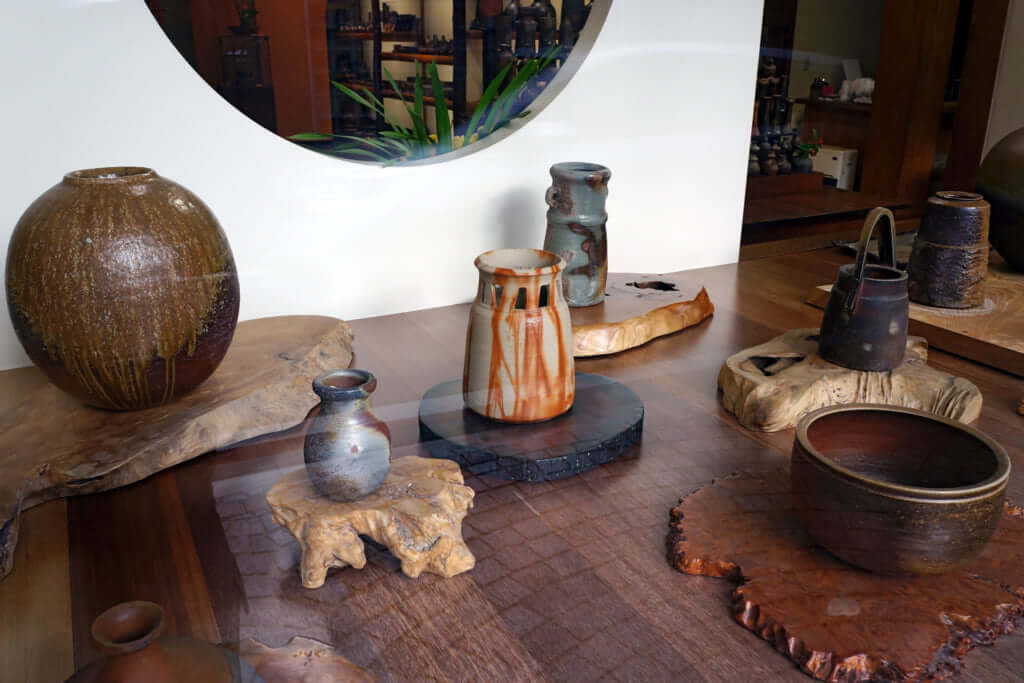
Different styles of Bizen-yaki in the storefront of one of the many galleries in the area.
To the east of the prefecture lies the region of Bizen, famous since the Kamakura period (1185-1338) for the production of ceramics. The chimneys of the kilns, of which around 200 are still active, rise tall over the landscape, and to this day, the style of pottery that characterised the area back then—reddish and yellow in colour and naturally glazed by the ashes that form and fly about inside the wood kilns—is still produced. Bizen ware can be enjoyed by browsing the many galleries and small shops in the area, some of which offer pottery lessons. Amatsu Shrine, a small Shinto shrine that is believed to have been built in 1411, is decorated with sculptures and tiles also made in the Bizen style of ceramics.
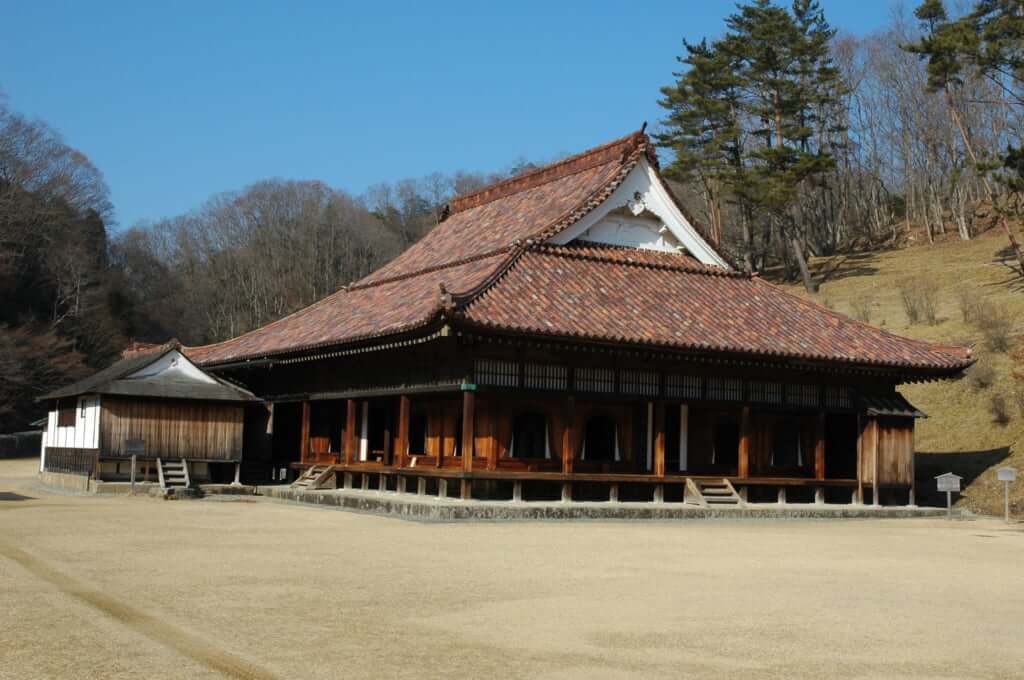
The main building of Shizutani School is still used as a seminar centre for various companies.
Shizutani School, built about 350 years ago, is considered the first public school to have provided education to children from non-noble families. The school was built using the best architectural techniques of the time and its roofs were decorated with Bizen ceramic tiles. Both in autumn, when the leaves of the trees turn red and yellow, and in spring, when the camellias in the garden bloom, the school is full of visitors who come to enjoy this special place.
To the south, in the Hinase area, ferries offer island-hopping tours for discovering the Okayama islands. The area is also famous for its oysters, considered some of the best in the country.
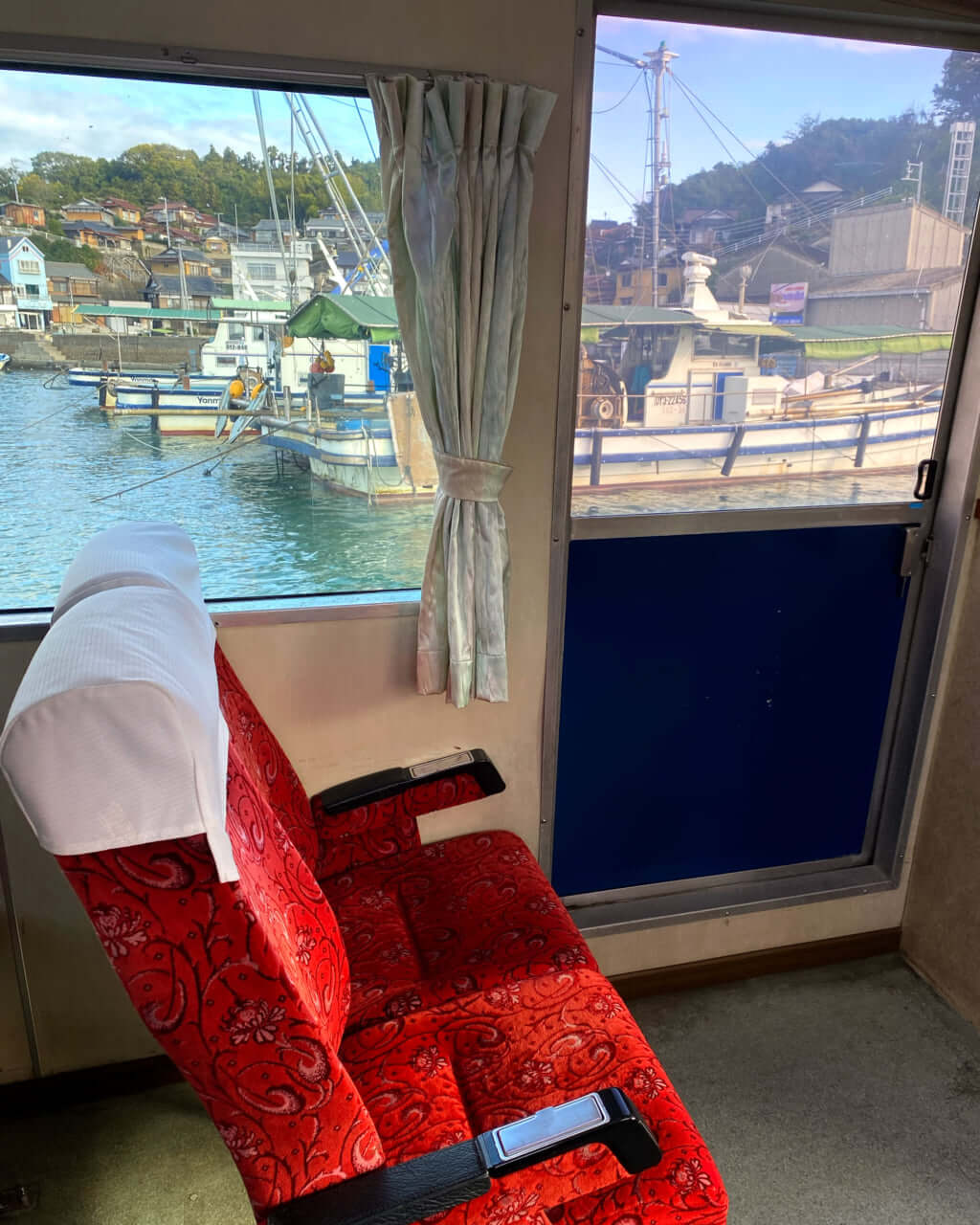
Ferries depart from the port of Hinase to explore the nearby islands more closely.
Setouchi, a Coastal City with a Rich History in Sword-Making
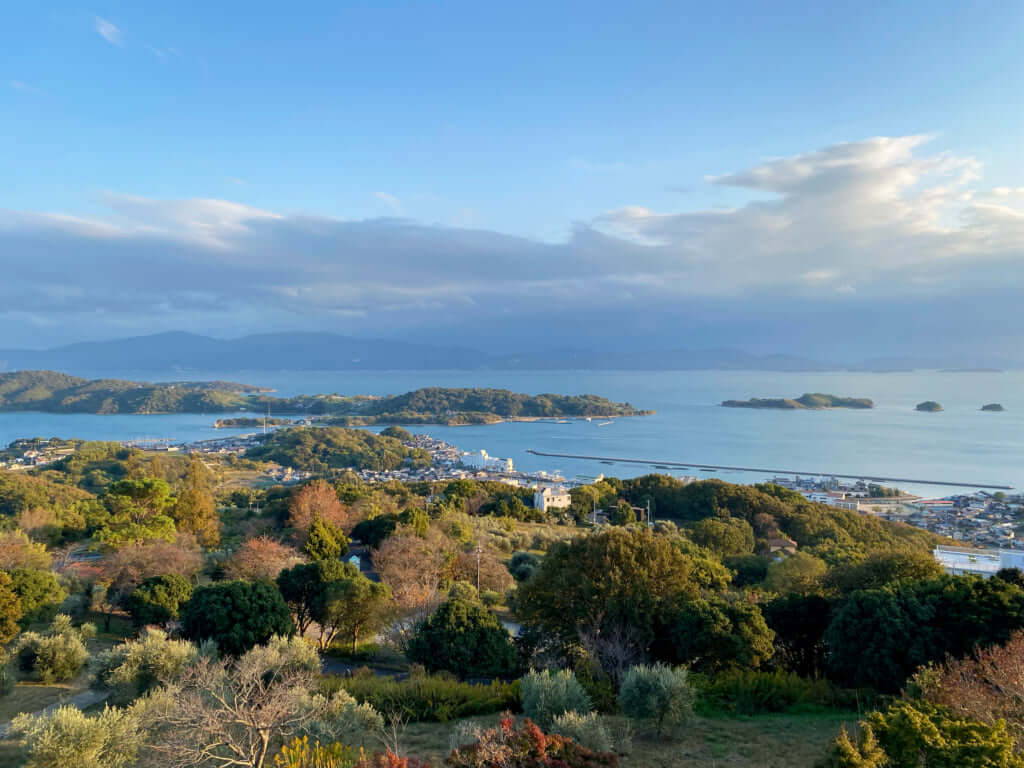
Stunning view of the Seto Inland Sea from the Ushimado Olive Garden in Setouchi.
In the south of the prefecture and facing the Seto Inland Sea, the city of Setouchi was founded in 2004 through the union of the villages of Oku, Osafune, and Ushimado. The peculiarities of each of these three areas have managed to create from their synergy an interesting town. Here, the nature and tranquillity of a coastal village combine with the culture of the area that saw Takehisa Yumeji, the painter known for his bijinga (pictures of beautiful women), grow up. Adding to the interest of the area is the rich age-old tradition of metalworking, which still today attracts blacksmiths who produce Japanese swords to the highest standards. For those interested in learning more about the art of swordsmithing in Japan, a visit to the Bizen Osafune Japanese Sword Museum is a must. There, visitors can learn about the history of the practice and see some of the best swords made in the country, as well as watch craftsmen working through the various steps in the process of making an authentic Japanese sword.
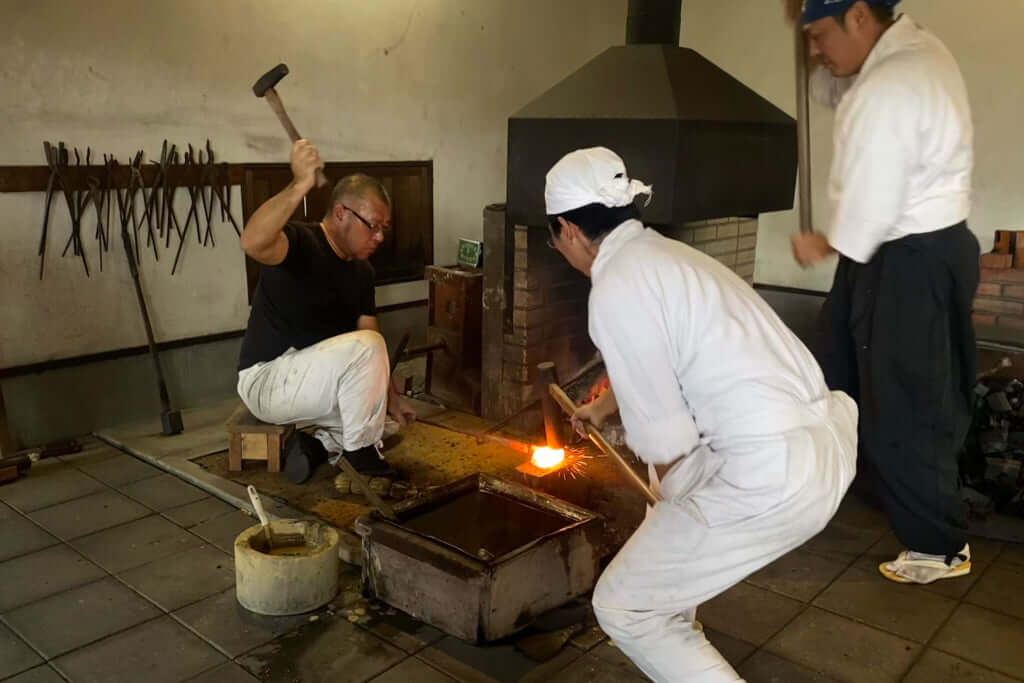
Swordsmith Hiroyasu Ando showing the process of making a sword at Bizen Osafune Japanese Sword Museum.
Nagashima, a small island just 30 metres off the mainland, was once the setting of the sad story of the isolation of people suffering from Hansen’s disease, also known as leprosy. In the late 1930s, the National Leprosarium was opened, isolating leprosy patients from the rest of society until 1988, when the bridge connecting the island to the mainland was opened. As an initiative to bring the history of the place and an awareness of the reality of Hansen’s disease to the general public, the Nagashima Aisei-en historical museum was opened, where in exchange for a seminar on the history of the place, visitors can stay a night for free in the Mutsumi exchange hall.
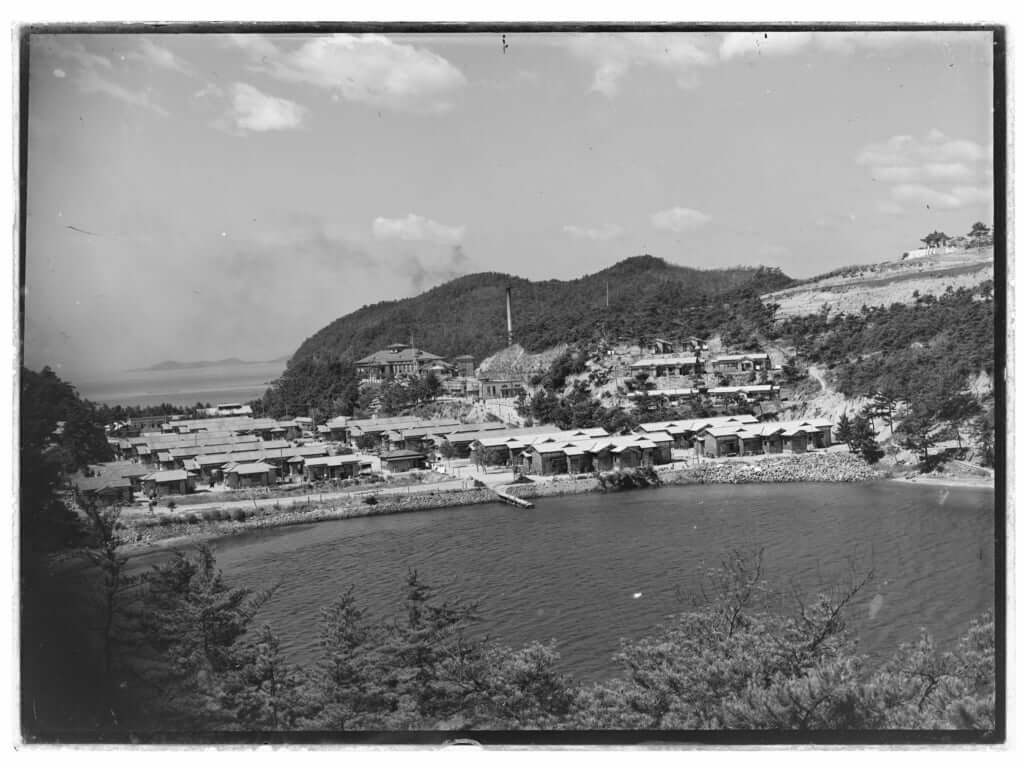
Nagashima’s National Leprosarium in 1937, seven years after it was founded.
Nagi, where Kabuki and Contemporary Art Live Side by Side
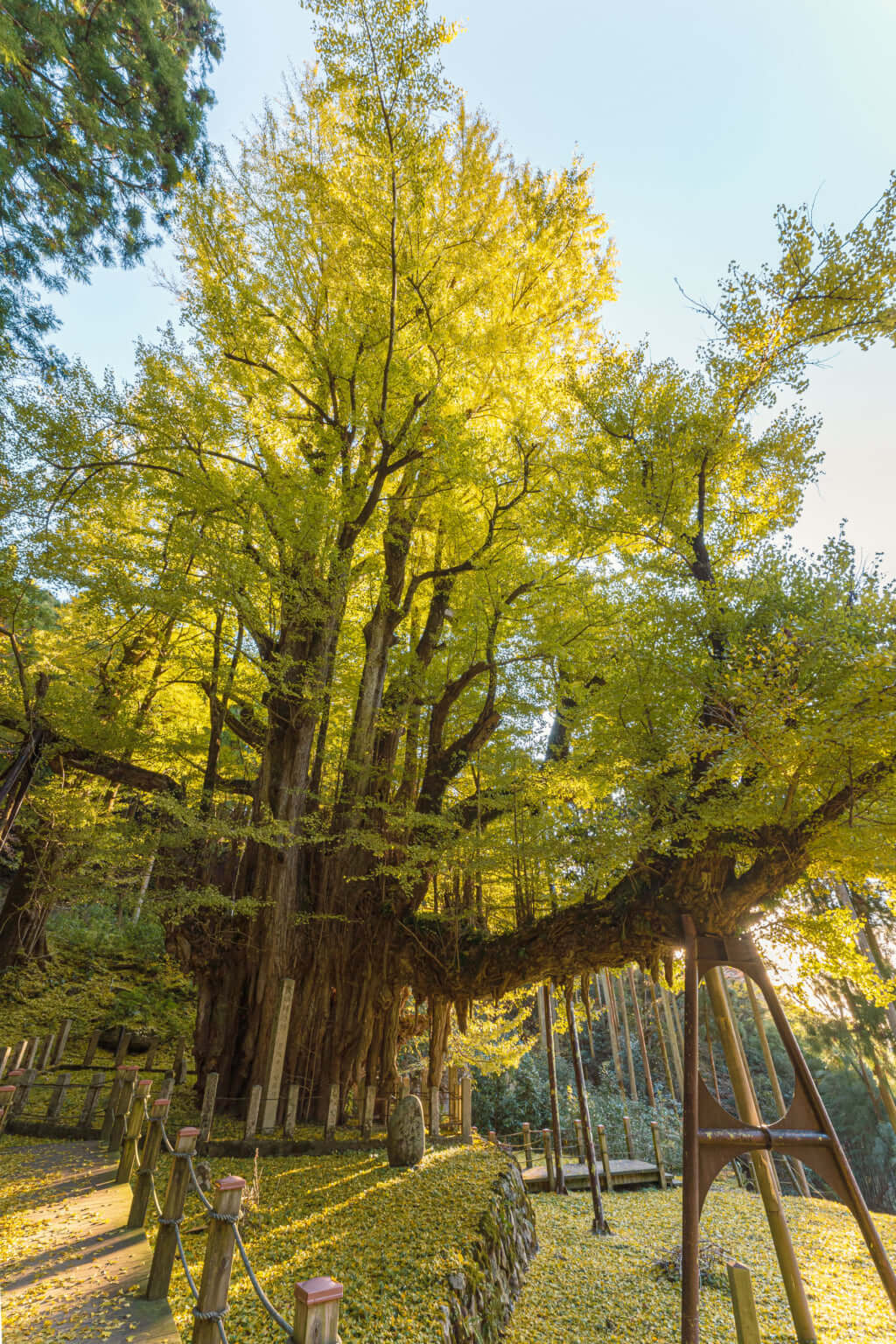
The magnificent 900-year-old Bodaiji Gingko Tree at the foot of Mount Nagi stands as a symbol of the prefecture of Okayama.
Located in the northeast of Okayama Prefecture, the town of Nagi has recently attracted public interest for an impressive increase in the birth rate from 1.41 to almost 3 thanks to its policies to help young couples. Not only these policies, but also the surrounding nature, which attracts hiking enthusiasts seeking to explore the trails around Mount Nagi, and its rich gastronomy, famous for its beef, pork, and satoimo potatoes, make Nagi an ideal retreat for families and those who crave a break in the countryside.
In contrast to this rather rural image, Nagi is also home to the Nagi Museum of Contemporary Art (MOCA), designed by Pritzker Prize winner Arata Isozaki. Composed of three installations (Sun, Moon, and Earth) that constantly interact with the surrounding environment, the museum changes by the minute and invites the viewer to experience art with all five senses.
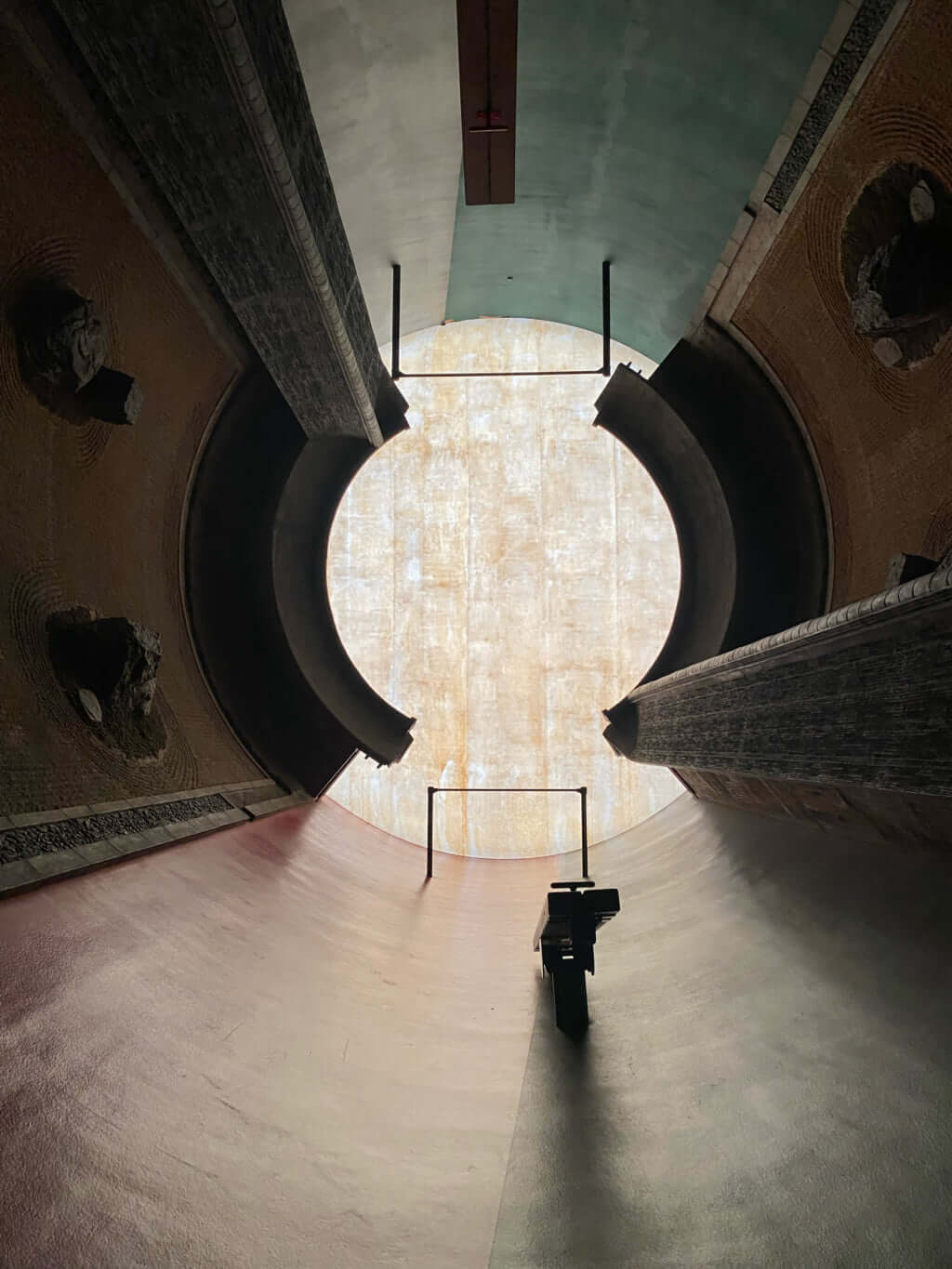
The Sun, by artists Shusaku Arakawa and Madeline Gins, is one of the permanent installations at Nagi MOCA.
Contemporary art cohabits with the performance art of Kabuki Yokozen, which has been widespread in Nagi since the Edo period (1603-1868). This type of ‘street’ kabuki, created for the common people, is still alive and thriving, and its performances can be enjoyed in Okayama Prefecture and beyond.
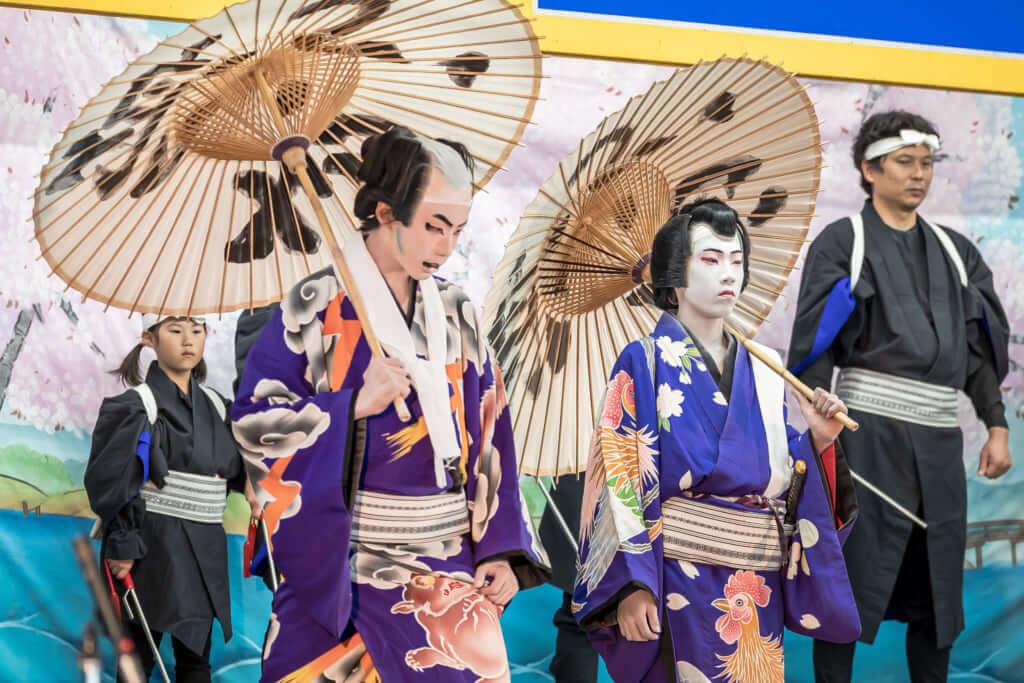
Actors of Kabuki Yokozen, in the traditional costumes and make-up of the genre, in which every detail is full of meaning.
Although not usually on the radar of those planning to visit Japan, Okayama Prefecture has much to offer those interested in the country’s artisanship, culture, and nature in a setting far from the crowds of the more well-known cities.
TRENDING
-
The Tattoos that Marked the Criminals of the Edo Period
Traditional tattoos were strong signifiers; murderers had head tattoos, while theft might result in an arm tattoo.

-
Colour Photos of Yakuza Tattoos from the Meiji Period
19th-century photographs have captured the usually hidden tattoos that covered the bodies of the members of Japanese organised crime gangs.

-
The Trendiest ‘Sento’ and Saunas in Tokyo
The bath culture remains vibrant in the capital city, where public baths and saunas designed by renowned architects are continuously opening.

-
Rituals of Ancient Gay Shunga Erotica
Shunga was prolific in Japan during the Edo period, with ‘nanshoku’ referring to the depiction of homosexual erotica.

-
‘LSD: Dream Emulator’, an Avant-Garde Game Released on PlayStation
In this video game created by Osamu Sato and released in 1998, the player explores the surrealist, psychedelic environment of a dream.



